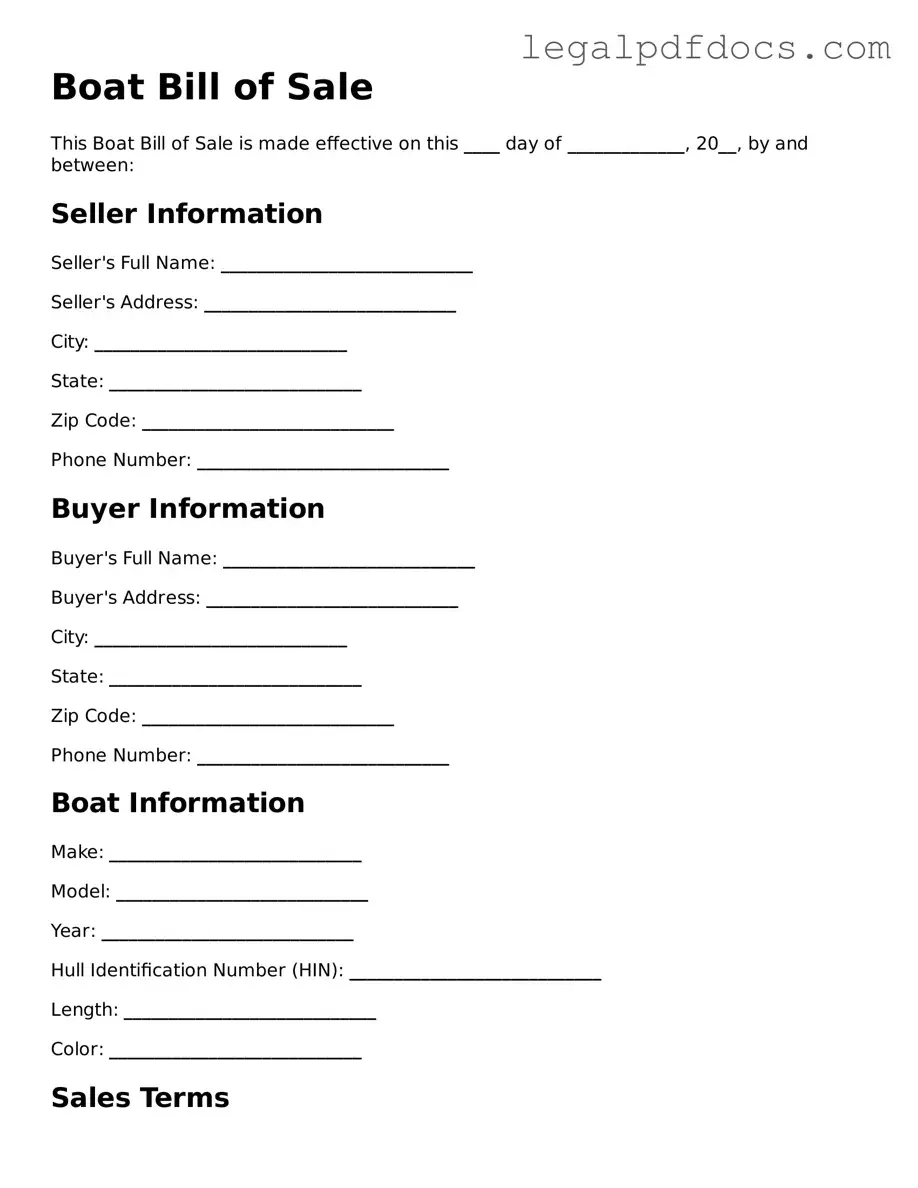When it comes to buying or selling a boat, having the right documentation is crucial to ensure a smooth transaction. One of the most important documents in this process is the Boat Bill of Sale form. This form serves as a legal record of the transfer of ownership from the seller to the buyer, providing essential details that protect both parties involved. It typically includes information such as the boat's make, model, year, and identification number, along with the purchase price and the date of sale. Additionally, the form may require signatures from both the seller and the buyer, signifying their agreement to the terms laid out. By completing this form, both parties can avoid potential disputes in the future, making it a vital step in the boat buying or selling journey. Whether you are a seasoned boater or a first-time buyer, understanding the significance of the Boat Bill of Sale form can help you navigate the waters of ownership transfer with confidence.
